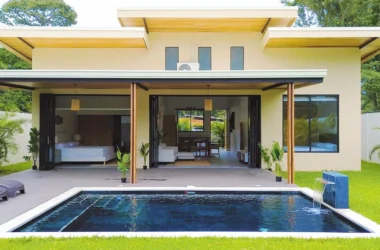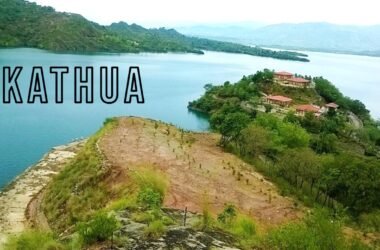Among Iceland’s countless treasures, Seljalandsfoss stands out as one of the country’s most enchanting and photogenic waterfalls. Towering at sixty meters high, with a delicate cascade spilling gracefully from ancient cliffs, this natural wonder offers more than just breathtaking views. Its unique structure allows visitors to walk behind the falls, creating an almost otherworldly experience that few other waterfalls in the world can replicate. From folklore to geology, this article will take you deep into the heart of Seljalandsfoss, exploring every facet that makes it a must-visit destination.
The Geological Origin of Seljalandsfoss
Seljalandsfoss owes its origin to the Eyjafjallajökull volcano. The cliffs from which the water tumbles are part of a former coastline that receded over time due to volcanic activity and rising landmass. The meltwater from the glacier-capped volcano feeds the river Seljalandsá, which plunges over the cliff to form the waterfall. The surrounding area features a mixture of lava fields, moss-covered stones, and fertile land shaped by thousands of years of geological processes.
Walking Behind Seljalandsfoss
Perhaps the most extraordinary feature of Seljalandsfoss is the footpath that leads behind the waterfall. As you step through the mist and around the rocky path, you find yourself encircled by a curtain of water. The roar is deafening, and the air is thick with moisture, but the view from behind the waterfall, especially during sunset, is truly magical. Light filters through the falling water, casting rainbows and illuminating the cave behind the falls.
Best Time to Visit Seljalandsfoss
Timing is everything when it comes to visiting Seljalandsfoss. Although accessible year-round, the experience varies dramatically by season. Summer offers long daylight hours and lush greenery, while winter presents a more dramatic view with icicles forming along the cliffs. Spring sees powerful water flows from melting snow, whereas autumn gifts the visitor with golden foliage. However, walking behind the waterfall in winter can be slippery and dangerous, so proper footwear and caution are advised.
Photography Tips at Seljalandsfoss
For photographers, Seljalandsfoss is a dream. The best time to shoot is during the golden hour — just after sunrise or before sunset — when the light is warm and soft. Using a tripod and long exposure settings can produce a dreamy, silky look for the falling water. Don’t forget to pack waterproof gear, as the spray is intense. Drones are also popular but must be used responsibly and in accordance with local regulations.
Myths and Folklore Around Seljalandsfoss
Like many Icelandic landmarks, Seljalandsfoss is shrouded in myth. Some locals say it is guarded by hidden people, or huldufólk, who protect the purity and sacredness of the land. Others believe the cave behind the waterfall was once a meeting place for Vikings or ancient druids. These legends add a mystical allure to the already awe-inspiring setting, inviting visitors to see not just with their eyes, but with their imagination.
How to Get to Seljalandsfoss
Located just off Iceland’s Ring Road (Route 1), Seljalandsfoss is easily accessible by car. It’s about 120 kilometers southeast of Reykjavík, which takes roughly two hours to drive. Public buses also pass near the area, and many tour companies include Seljalandsfoss in their itineraries. The proximity to other popular sites like Skógafoss, Þórsmörk, and Eyjafjallajökull makes it a perfect stop on a longer road trip through Iceland’s south coast.
Things to Do Near Seljalandsfoss
Just a short walk from Seljalandsfoss is Gljúfrabúi, a lesser-known but equally stunning waterfall hidden within a canyon. Many visitors overlook this gem, but those who venture into the narrow crevice are rewarded with a surreal sight. Additionally, the nearby town of Hvolsvöllur offers cozy accommodations, museums, and traditional Icelandic cuisine. Hiking, birdwatching, and glacier tours are all within reach, making the area around Seljalandsfoss an adventure hub.
Environmental Conservation of Seljalandsfoss
Due to its growing popularity, Seljalandsfoss faces environmental pressures, including erosion and increased foot traffic. Efforts have been made to maintain walking paths and install safety features while preserving the natural beauty of the site. Visitors are encouraged to stay on marked trails and respect the land. Eco-tourism initiatives help ensure that future generations can enjoy the unspoiled majesty of Seljalandsfoss.
Where to Stay When Visiting Seljalandsfoss
There are numerous accommodation options near Seljalandsfoss, ranging from cozy guesthouses to luxurious eco-hotels. Many travelers choose to camp in the designated areas nearby, offering a chance to wake up to the sound of the waterfall. Staying in nearby villages like Vik or Hvolsvöllur provides more amenities and access to local culture. Booking in advance is wise, especially during peak summer months.
Seljalandsfoss Through the Seasons
Seljalandsfoss transforms with the seasons, each offering a different mood and aesthetic. Spring brings a rush of melting snow and fresh growth, while summer is perfect for extended daylight exploration. Autumn dresses the cliffs in gold and red hues, and winter covers the entire landscape in ice and frost, creating an ethereal, fairy-tale atmosphere. No matter when you visit, Seljalandsfoss promises an unforgettable experience.
Behind the Lens: Filming and Media Appearances
Seljalandsfoss has been featured in music videos, travel documentaries, and films. Its cinematic beauty makes it a favorite location for visual storytellers. Artists and influencers from around the world come here to capture its dramatic backdrops. Even travelers with a smartphone can return home with images that look like scenes from a fantasy film.
Safety Tips for Visiting Seljalandsfoss
While the path behind the waterfall is well-maintained, it can be slippery, especially in wet or icy conditions. Wearing waterproof shoes with good traction is essential. Bring a rain jacket or poncho, as the mist can leave you drenched. Be mindful of your step, respect warning signs, and avoid climbing on rocks near the edge. For families with children, extra caution is advised due to steep sections and wet surfaces.
Conclusion
Seljalandsfoss is more than just a waterfall. It’s a place where nature, mythology, and adventure converge in one of the most dramatic and accessible landscapes on Earth. From its geological roots to the magical trail behind its cascade, every aspect of Seljalandsfoss invites exploration and awe. Whether you’re a solo traveler seeking serenity, a photographer chasing beauty, or a family making memories, this Icelandic gem will leave a lasting impression on your heart and camera roll.








